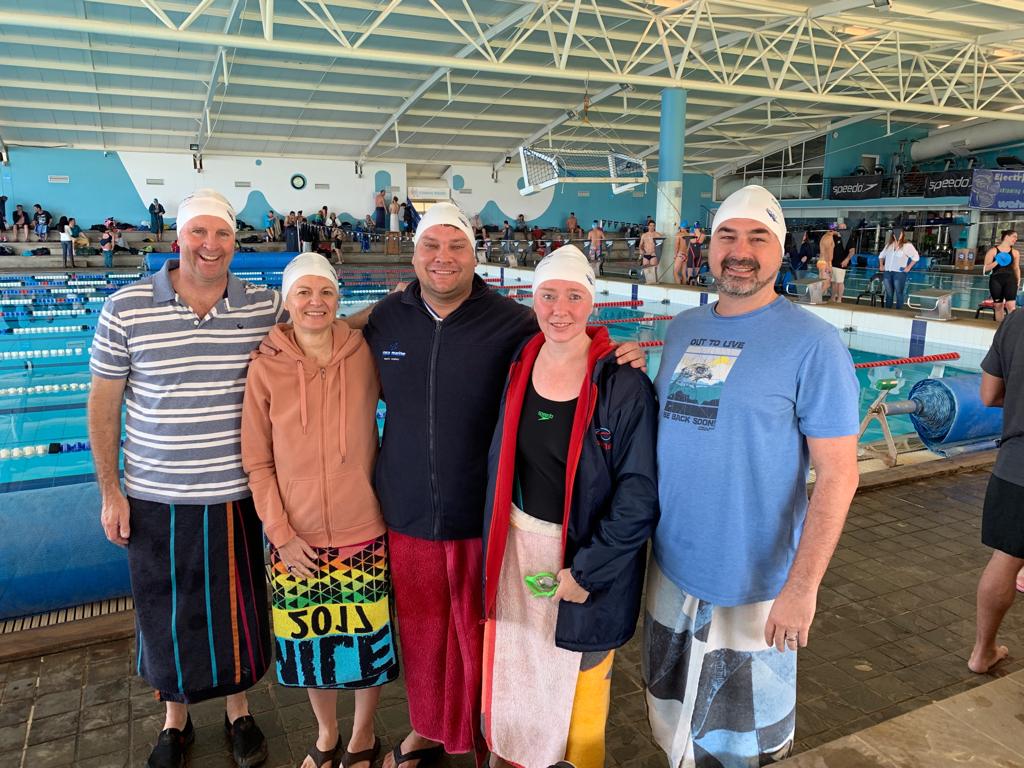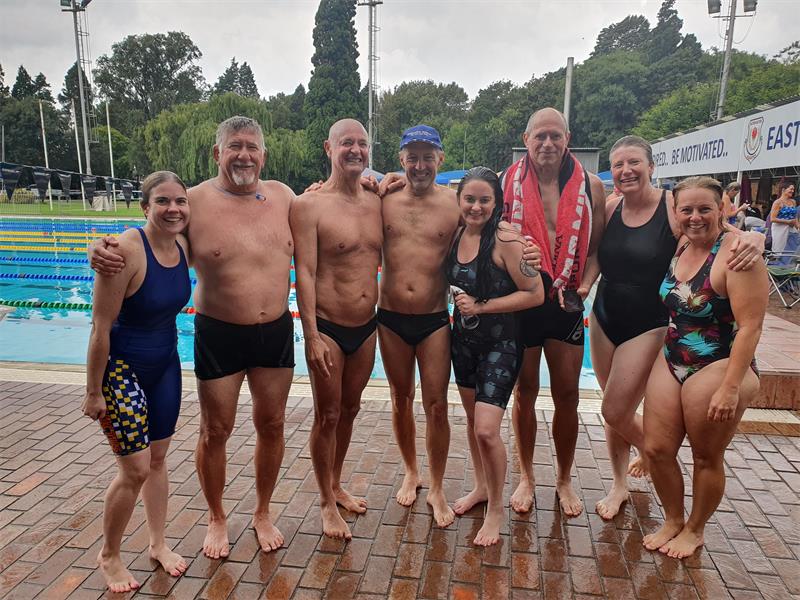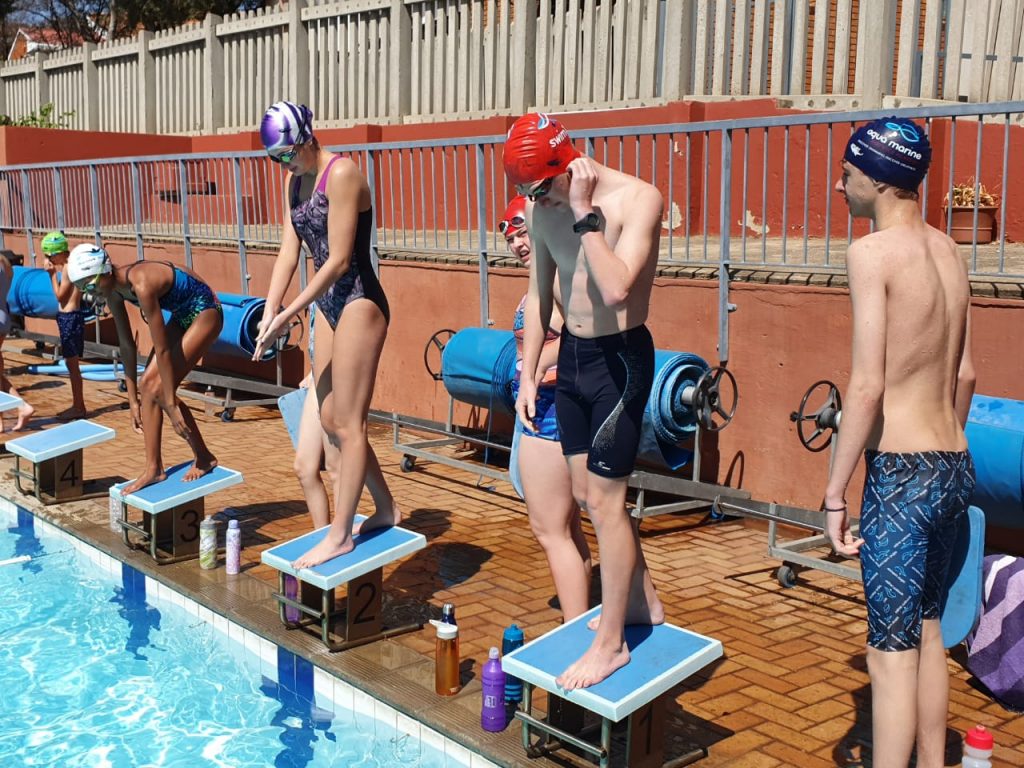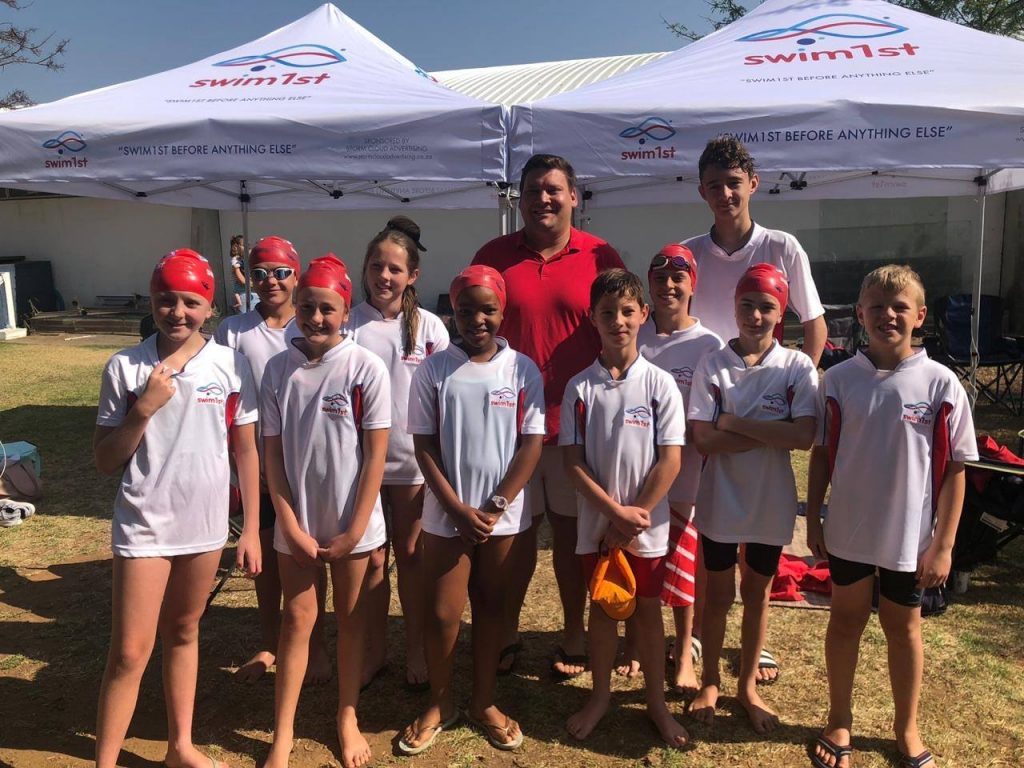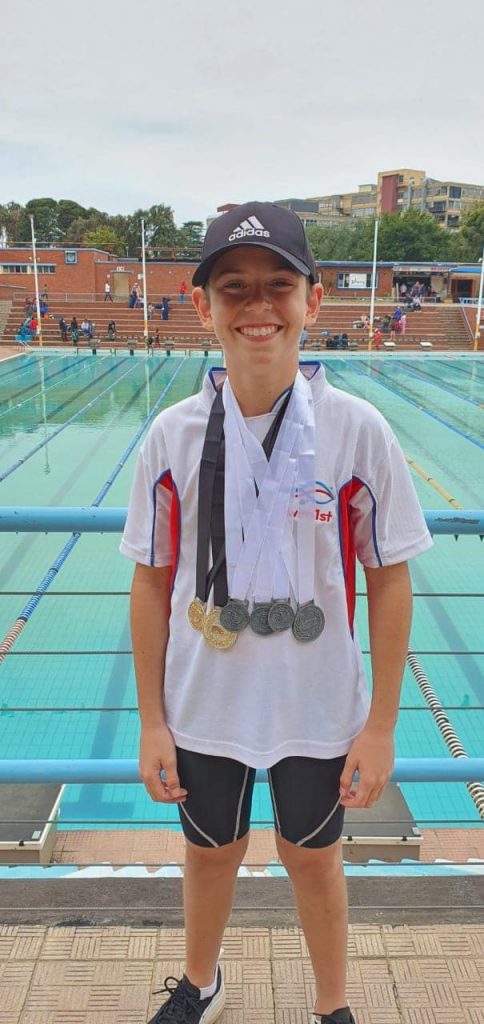Services & F.A.Qs
This is an introduction to competitive swimming. In order to enter these galas, you must have registered with your district through your club.
The coach will advise when the swimmer is ready to take part.
Should they achieve a level 2 qualifying time, they are eligible to swim level 2 galas.
Should they choose to continue to swim at level 1, they may not swim the event they swam the level 2 qualifying time in.
There are approximately 4 galas during the season and a district Level 1 Championship Gala at the end of the season (held by their district).
Level 1
The Level 1 Regional Age Group Competition caters for swimmers from 9 years and under up to 16 years. You need one qualifying time to compete.
You may compete in all the events you have qualified in plus 3 others PROVIDED you have swum that event during the current season and you have a time for it on the database.
If you have a level 2 time you may not swim (unless you are 10 years or under in which case you can choose level 2 or level 3). Swimmers who wish to enter in another region, must apply to SSA, motivating their request through the club.
- All swimmers swimming CGA for the first time can start at level 1 or Swimmers 8 years and under must compete at level 1.
- No-one over 16 years may swim in level 2 galas.
- Once a swimmer has made a level 3 qualifying time they move up to level 3.
- Only swimmers 10 years and under may choose to stay at level 1 and not move up to level 2.
- Once you have moved up to level 2 you may not move back down to level 1 (unless a swimmer ages up and does not make the new qualifying time).
Take note:
- That there are approximately 4 – 5 galas during the season.
- CGA Level 1 Champs at the end of the season.
- Level 1 Regional Age Group Competition at the end of the season (held regionally).
LEVEL 1 – R1825
Level 2+
The Level 2+ Regional Age Group Competition caters for swimmers from 11 years and under up to the age group of 15-18 years. You need one qualifying time to compete, and two IM participating times.
You may compete in all the events you have qualified in plus 3 others PROVIDED you have swum that event during the current season, and you have a time for it on the database.
If you have a SA Junior National qualifying time you may not swim (unless you are 11 years or under in which case, you can choose level 3 or SA Junior Nationals). Swimmers that wish to swim in other regional competitions, must apply to SSA, motivating their request through the club.
- A swimmer must have one level 3 qualifying time to enter this league
- At level 3 the 15-16 year and the 17-18 year age groups have been combined to form a 15-18 year age group
- Swimmers 10 years and younger are encouraged to swim level 2 even if they have qualified for level 3 or SA Junior Nationals
- Similarly, 11 year olds with SA Junior National times are encouraged to swim at level 3 although they have a choice
- Once a swimmer makes a SA Junior National qualifying time they move up to SA Junior Nation level and may not move back down to level 3 (unless a swimmer ages up and does not make the new qualifying time.
Take note:
- That there are CGA organised galas during the season.
- CGA Level 3 Championships at the end of the season.
- Level 3 Regional Age Group Competition at the end of the season (held regionally).
This is the highest of the age group swimming levels and is a big achievement in swimming.
- A swimmer must achieve one SA Junior National qualifying time to enter this league.
- There is no maximum age limit for a SA Junior National age group gala (please note that the SA Junior National Championship Gala is different – see below).
- Once you have moved up to SA Junior National level you may not move back down to level 3 (unless a swimmer ages up and does not make the new qualifying time).
- Only swimmers 12 years and under may choose to stay at level 3 and not move up to SA Junior National level.
Take note:
- That there are CGA organised galas during the season, the SA Junior National Championship Gala at the end of the season (held in one location nationally).
- The Age Group Competition caters for swimmers from 12 years and under up to the age of 18 years.
- You need one qualifying time to compete (you may not qualify in a 50m event – it has to be a 100m distance or more event) and two IM participating times.
- You may compete in all the events you have qualified in plus 3 other events (excluding 50m events) plus any of the 50m events – PROVIDED you have swum that event during the current season and you have a time for it on the database.
- you have a SA Junior National time you must swim SA Junior Nationals (unless you are 11 years or under in which case you can swim level 3).
- However, swimmers who are not 12 years old may not enter the 12 – 14 years events e.g. 200 Fly, 400 IM, 800 and 1500 Free at SA Junior Nationals.
- This is “open” i.e. you do not swim in an age group.
- The Open National Swimming competitions are now held as a combined event. The competitions are:
- The Youth Competition (previously known as B Nationals)
- SA Nationals Championship (known as A Nationals)
- These are provincial competitions i.e. the swimmer represents their province.
- For the Youth Competition you must be:
- Men 21 years and under
- Women 21 years and under
- You must swim one qualifying time (Youth qualifying times are slower than SA National qualifying times).
- You may swim the event/s you qualified in plus 3 others provided you have swum those events during the current season and have a time on the database.
- There are two sets of finals:
- The Youth final.
- The Senior National semi-finals/finals.
- For SA Nationals final, the top 16 swimmers swim in semi-finals and then the top 8 in finals in certain events.
F.A.Q.
Welcome to Swim1st Frequently Asked Questions (FAQs). I want to thank you for being a part of our program. We have listed some basic information below plus several questions and answers, so please take some time to go through all of this info.
If you would like to request a schedule change into a different time/day option, simply speak to your facility administrator either verbally, WhatsApp or mail.
Of course, moving into another time/day slot will depend on availability/space.
There are no hard and fast rules or requirements that are standardised in our program relating to group advancement. Instead, we as a staff recognise when a swimmer has exceeded their stay in a certain group and is ready to move on to a higher level group. This can happen during any part of the season and once we see that a swimmer is ready, we’ll initiate the next steps with the parent.
We at Swim1st prefer to allow a swimmer some added time in their respective group to master the skills of that group, until we see that the swimmer has in effect “outgrown” that group. If you believe that there is a group misplacement issue, or your athlete is looking for something other than what the current group is offering, please bring that to the attention of our coaches so we can all be on the same page working together.
Bottom line: We will initiate the discussion when it is time. Also keep in mind that our groups continue to get better and improve throughout the course of each season. A competitive program that is doing the right things cannot help but continue to get better throughout the year. A swimmer’s success ultimately has very little to do with the actual “group” placement. We do get it wrong from time to time, and we are happy to have the conversation and discuss.
Once per year, prior to your swimmer beginning practising with us. Our calendar year is June through the end of May, with each June being the beginning of a new season and year with us. To clarify, if you are new to Swim1st, and you register sometime other than the start of the school year, your registration will be valid with us until May 31st.
At that time, we re-register ALL Swim1st athletes for the upcoming school year at the start of June each season, which will carry them to the following May 31st.
The coaches have a compacted schedule while on the pool deck coaching group after group, and it serves the athletes well if our attention is focused on them during their practice times.
For that reason, we prefer that you contact your coach by email and they will reply to you within 24 hours in most cases during the week. If you have not heard back from your coach within 24 hours, send an email to the club secretary at club@swim1st.co.za and we will get an answer to you.
From time to time your child’s coach will make himself/herself available for a few quick minutes if in between practices, after a practice if no other scheduled practice right away, etc. If the coach looks free, please feel free to approach the coach and ask if they have a moment to answer your question.
If it is an issue that you believe warrants a personal meeting with a coach, we’ll do our part to arrange a time convenient for you.
We send out Coach’s Notes quite frequently via your email address we have on file. Please take the time to review these notes.
We also have our upcoming meets /social events posted on our website under “Events.” Rarely do we make schedule changes. We realise that you have come to depend on a certain schedule, and we don’t take making changes to the schedule lightly.
Soon you will have a monthly group calendar posted on the website with important dates and deadlines specific to your swimmer’s group.
If you have a conflict/issue please take it up with your child’s group coach and give them a chance to discuss the issue with you. If after doing that, you feel that it needs to come to my attention, please contact me. However, don’t sit in the bleachers or in the parking lot airing out dirty laundry.
Whether it is family, school, church, your job, whatever, there is no such thing as a perfect relationship. If you were to rate the top 10 items you are looking for in a swim program, and grade each one of those items, I’d guess we’d rate fairly high in most areas.
However, I’d also bet that we would have a few areas in your eyes where we could use some improvement. It is your decision/choice how much you want those “less than perfect” items to affect you. We offer a lot to our athletes. We have the most qualified coaching staff assembled anywhere – coaches who love to coach.
We have our own indoor facilities with total control of the water, not dependent on any HOA, a city, a lease agreement, or any parent entity like a country club or the Y. We have multiple group options for most ability levels. We are committed to helping every Swim1st athlete achieve their highest personal potential, and we’ll match energy for energy. You show us the commitment, we’ll take you as far and high as possible.
We coaches communicate the areas/strokes/drills we want addressed each week and the individual group coaches construct their weekly workouts based around that. For example, for our younger/developmental groups, kicking is a cornerstone of any quality swim program, so you will see some aspect of kicking in every practice. As the group levels progress, the skills/drills/intervals also progress in complexity and intensity.
However, we coaches deviate from the “plan” from time to time if circumstances dictate. For example: When the group is not quite executing a particular drill/skill/stroke/or set like we had expected, and more time may be needed to work through some additional steps. We refer to that as “calling an audible” and we end up “changing the play.” For our more advanced groups, more time is spent taking the “season approach” in the planning of workouts.
You are welcomed to view the practice from the bleachers. You can run errands. You are not required to stay in the swim center during your athlete’s practice. However, we ask that you pick up your child on time from practice. Please refrain from coaching from the bleachers, giving hand signals, getting their attention, or otherwise disrupting the group. We try hard to keep their attention, and we don’t need the added competition from the bleachers or at the end of the pool.
The wrong way is to sit in the bleachers and critique what the group, the coach, and/or the swimmers are doing wrong and how you believe you could do it better. The right way: Resist the temptation to get pulled into “discussions” like that. Better yet, take a stand for youth sports and speak up if you hear another parent going down the negative path. Let them know that it is not appropriate and you don’t appreciate it. Thanks in advance. Positive is how we roll. It’s better that way.
We teach the kids that we understand that they are not in control of the time they get to the front door. However, when they do walk through our doors, they then become in charge of their time. We expect them to hustle to the locker area, get their shower, and walk quickly to their group. The coach will let the athlete know what the group is doing.
Just have your athlete inform the coach ahead of time, and when you need to get your child out, it is OK for you to get the coach’s attention and remind them that your child needs to leave.
About three minutes prior to the scheduled start time of their practice the kids will begin to gather outside the entrance or designated pool lane.
Either the facility administrator or coach, otherwise, No need to notify anyone. We’ll see you next practice. If a medical reason will keep your athlete out of the water for an extended period of time, let team administration know.
Each group has specific gear items required. These items are listed under group descriptions on our site.
All swimmers must wear a swim cap during practices. We have these available for purchase at our front counters. We ask that all swimmers rinse off in our showers prior to getting in each day.
This helps keep our water clean more than you know! Also – no bandaids or gum allowed in the pool, and no outside food or drink allowed in the swim center.
Short Course is defined as the season where the meets are held in 25m pools.
Long Course is defined as the season where meets are held in pools with the 50 meter configuration.
Impossible. Well, maybe possible —-if they swim only two meets total in their whole lifetime I suppose it can happen. Important point: A best time doesn’t necessarily mean it was a good swim. Contrarily, not getting a best time doesn’t necessarily mean it was a “bad” swim either.
Let me explain: We work on a lot of skills week in and week out. We work on developing good habits, and chasing away the bad ones. Your swimmer may have not received a “best time,” but it may have been the best swim of their lives! We don’t enjoy seeing the kids equate their swimming self-worth to whether or not they got a best time or not in a meet. This is a long journey. It is all part of the process.
Everything we do is geared for the long haul – the life lessons, the ups, the downs, the peaks, the valleys. And let me tell you right here, the valleys can be long and lonesome in this sport if not mentally prepared to handle! Any former competitive swimmer who “made it” past 15 yrs old, and stayed in the sport will surely attest to that. Support your kiddo, they are the first ones to know whether or not they got a “best time” or not, in the big picture, not that critical, and not a deal breaker. We want them to learn to enjoy the whole process. We also want YOU to learn to enjoy it – the ups and the downs.
We expect the swimmers on deck ready to go 15 minutes BEFORE the scheduled warm up time. We sit together as a Team and we warm up together as a Team.
If your swimmer shows up late for the team warm up, they will miss critical elements of the entire experience. The bonding, the jokes by the coaches, allowing to get into the right mindset for the meet are all part of the pre-warm up and warm up times. When you run late, the stress levels go up exponentially. Your swimmer doesn’t need that, nor do you, right? Leave the house early, be packed the night before, and arrive stress free on time!
It is best to bring two towels, sweats (Swim1st Kit) preferred, Swim1st cap, and two pair of goggles – just in case!
You may also want to pack a few healthy snacks, bottled water, maybe a sports drink or two.
Learn to ask the right questions of your swimmer: What did you learn today? What was the hardest part of the workout? What was the easiest? What was the most fun? Also, be sure to keep in mind that the number one reason kids swim is because they enjoy it and they have fun. The number one reason kids quit is because – you guessed it – it is no longer enjoyable and fun.
Truth is I’ve seen many cases of parents who mean well, but who chase their kids right out of this sport and sports altogether by placing too many demands and too much pressure to perform on their kids – spreadsheets, tracking reports that would make NASA envious, etc.
Every swimmer has their own individual time line when they “receive” the ability to “flip the switch” and begin to really compete – even if it is on a limited basis. In some swimmers it takes a little longer than others to develop.
On both the good days and especially on the days where life is delivering a lesson or two! Thanks for being a part of Swim1st. See you at the pool!

